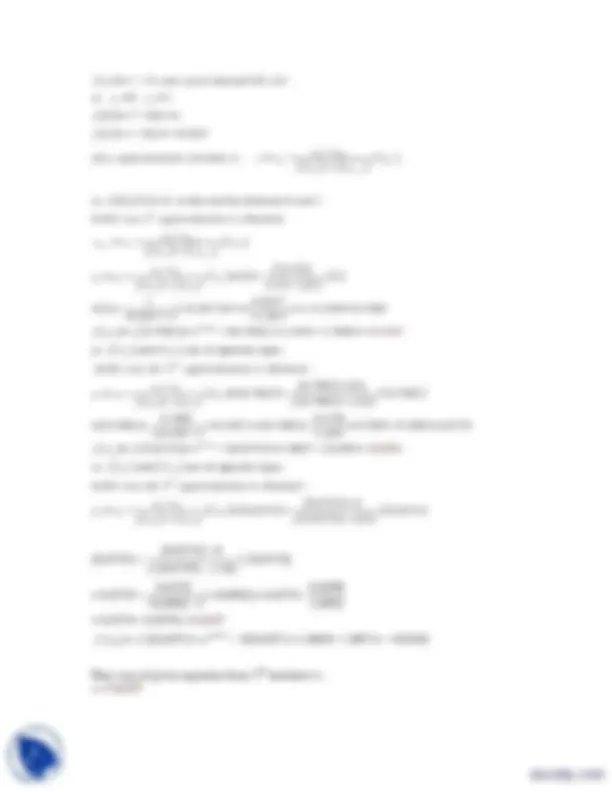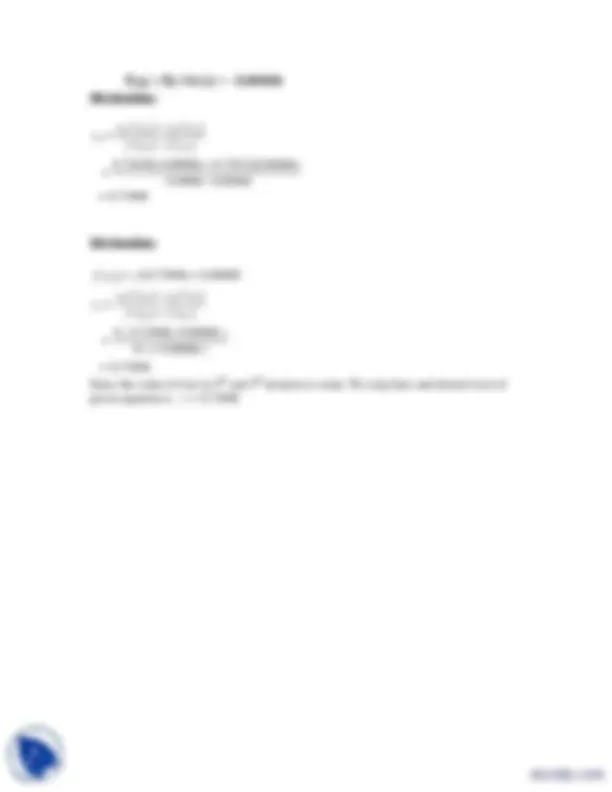






Study with the several resources on Docsity

Earn points by helping other students or get them with a premium plan


Prepare for your exams
Study with the several resources on Docsity

Earn points to download
Earn points by helping other students or get them with a premium plan
Community
Ask the community for help and clear up your study doubts
Discover the best universities in your country according to Docsity users
Free resources
Download our free guides on studying techniques, anxiety management strategies, and thesis advice from Docsity tutors
The solutions to assignment #1 in mth603 (spring 2012) for finding real roots of equations using the bisection method, regula-fasli method, and newton-raphson method. The solutions include the calculations and approximations for each method.
Typology: Exercises
1 / 8

This page cannot be seen from the preview
Don't miss anything!





MTH603 (Spring 2012) Total marks: 10 Lecture # 01- Due date: 15-04-
Dear students as it was told There are 4 questions in the assignment but only one question will be graded. Question 2 will be graded.
Question#1 Marks 10
Find the real root of the equation 2 x^3 x 2 0 correct to three decimal places by Bisection method. Perform three iterations only.
Note: Take any interval in which roots of the equation lie.
Solution: Consider the interval (0,1). Since
3 3
x x f x x x
3 3
f f
Since f(0)f(1) < 0 Therefore the root lies between 0 and 1.
1 st^ Iteration Let say x1 = 0 and x2 = 1
3 1 2 3
x^ x^ x f
Since f (0.5) 0, so we need to proceed further 2 nd^ Iteration Now f ( x 2 (^) ) f ( x 3 ) 0, Therefor root lie in the int erval [ ]
4 2 3 3
x^ x^ x f
Since ^ f^ (0.75)^ ^ 0, so we need to proceed further^ ^ ^ ^ ^ 3 rd^ Iteration 1 4 5 1 4
Now f x f x Therefor root lie in x x^ x
f (0.875) 2(0.875)^3 0.875 2 0. Therefore 0.875 is the approximate root of the given function after three iteration. Of course, this is not correct upto three decimal places. For that we need to do more iterations.
Question#2 Marks 10
Use Regula-Fasli method to find the real root of the equation ex^ ^3 x ^0 Correct to four decimal places after three successive approximations in 0 ^ x ^1
Note: All the calculation should be done in the radian mode only.
Solution:
Of course, this is not correct upto four decimal places. For that we need to do more iterations.
Question#3 Marks 10
Apply Newton-Raphson method to determine a root of the equation e x 10 x.
Correct to four decimal places. Only three iterations needed.
Note: All the calculation should be done in the radian mode only. Solution:
Find the root of the equation f ( ) x cos x x 0 correct to five decimal places by Secant Method.
Solution: f ( ) x cos x x 0 let x 0 (^) 0 and x 1 1
0 1
(0) cos 0 0 1 (1) cos1 1 0.
f f f f
1st Iteration:
3 1 2 2 1 2 1 3 3
x x^ f^ x^ x f^ x f x f x x x
2nd Iteration:
4 2 3 3 2 3 2 4 4
x x f^ x^ x f^ x f x f x x x
3rd Iteration:
5 3 4 4 3 4 3 5 5
x x f^ x^ x f^ x f x f x x x
4th Iteration:
6 4 5 5 4 5 4 0.73630(-0.00006) 0.73912(0.00466) 0.0006 0.
x x f^ x^ x f^ x f x f x
5th Iteration:
6 7 5 6 6 5 6 5
f x f x x f^ x^ x f^ x f x f x
Since the value of root in 4th^ and 5th^ iteration is same. We stop here and desired root of given equation is x 0.